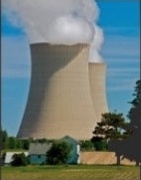By Pete McKenzie
Dec. 30, 2022
Every day at the Fukushima Daiichi nuclear plant in Japan, officials flush over a hundred tons of water through its corroded reactors to keep them cool after the calamitous meltdown of 2011. Then the highly radioactive water is pumped into hundreds of white and blue storage tanks that form a mazelike array around the plant.
For the last decade, that’s where the water has stayed. But with more than 1.3 million tons in the tanks, Japan is running out of room. So next year in spring, it plans to begin releasing the water into the Pacific after treatment for most radioactive particles, as has been done elsewhere.
The Japanese government, saying there is no feasible alternative, has pledged to carry out the release with close attention to safety standards. The plan has been endorsed by the United Nations’ nuclear watchdog.
But the approach is increasingly alarming Japan’s neighbors. Those in the South Pacific, who have suffered for decades from the fallout of a U.S. nuclear test in the Marshall Islands, are particularly skeptical of the promises of safety. Last month, a group representing more than a dozen countries in the Pacific, including Australia and the Marshall Islands, urged Tokyo to defer the wastewater releases.
[…]
Much of that mistrust is rooted in the unlikeliest of events. In 1954, snow fell on the tropical atoll of Rongelap. Residents of the reef, in the Marshall Islands, had never seen such a thing. Children played in it; some ate it. Two days later, U.S. soldiers arrived to tell them the “snow” was actually fallout from America’s largest nuclear test, which took place on nearby Bikini Atoll and irradiated Rongelap after an unexpected change in wind direction.
[…]
In the test’s aftermath, hundreds of people suffered intense radiation exposure, leading to skin burns and pregnancy complications. Decades later, people of the Marshall Islands still feel its impact through forced relocations, lost land and heightened cancer rates. “You feel this deep sorrow,” Ms. Racule said. “Why were we not good enough to be treated like human beings?”
[…]
In a statement last year, Youngsolwara Pacific, a prominent environmental advocacy group, asked, “How can the Japanese government, who has experienced the same brutal experiences of nuclear weapons in both Hiroshima and Nagasaki, wish to further pollute our Pacific with nuclear waste? To us, this irresponsible act of trans-boundary harm is just the same as waging nuclear war on us as Pacific peoples and our islands.”
[…]
To soothe Pacific concerns, Japanese authorities emphasize that their analysis shows that the wastewater plan is safe. Almost all radioactive particles will be removed from the wastewater before it is released, except for a hydrogen isotope called tritium that Japanese experts and others say poses a relatively low health risk.
“By diluting the tritium/water mixture with regular seawater, the level of radioactivity can be reduced to safe levels comparable to those associated with radiation from granite rocks, bore water, medical imaging, airline travel and certain types of food,” Nigel Marks, a nuclear materials researcher and associate professor at Curtin University, said in a statement distributed by the Australian Science Media Centre.
[…]
Motarilavoa Hilda Lini, a prominent politician and activist in Vanuatu, has said, “We need to remind Japan and other nuclear states of our Nuclear Free and Independent Pacific movement slogan: If it is safe, dump it in Tokyo, test it in Paris, and store it in Washington, but keep our Pacific nuclear-free.”
[…]
Read more.




